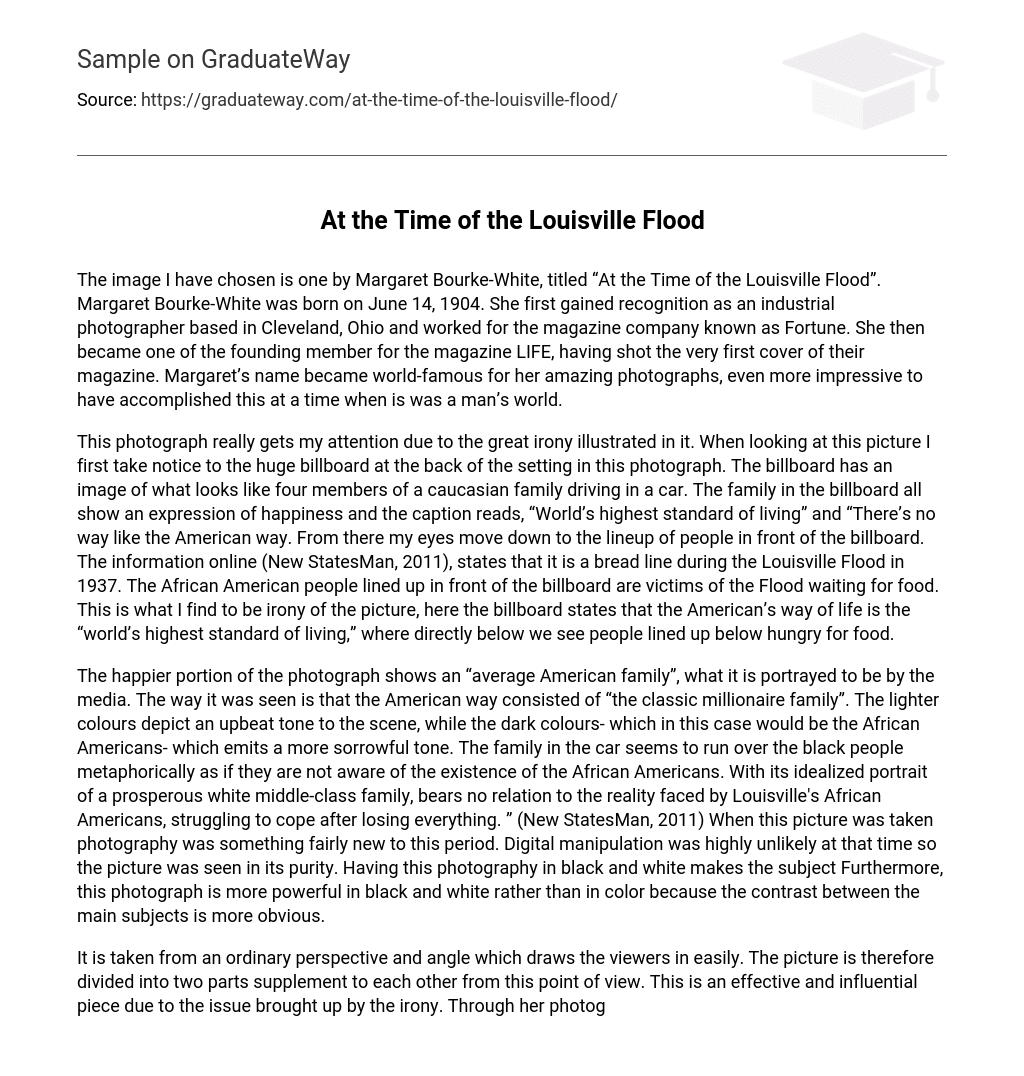The chosen image is titled “At the Time of the Louisville Flood” and was taken by Margaret Bourke-White, who was born on June 14, 1904. Bourke-White initially gained recognition as an industrial photographer in Cleveland, Ohio and worked for Fortune magazine. She later became a founding member of LIFE magazine and captured their very first cover. Despite living in a male-dominated world, Margaret’s photographs became internationally renowned, showcasing her remarkable talent.
The photograph captures my attention with its striking irony. The focal point is the large billboard in the background, featuring an image of a caucasian family happily driving in a car. The caption proudly proclaims, “World’s highest standard of living” and “There’s no way like the American way.” Directly in front of the billboard, a lineup of people adds another layer of significance to the scene.
According to information found online (New StatesMan, 2011), this picture shows a bread line during the Louisville Flood in 1937. The individuals waiting for food in front of the billboard are African American victims of the Flood. The irony lies in the fact that the billboard claims that American’s way of life is the “world’s highest standard of living,” while right below it, we see people lined up in hunger for food.
The photograph portrays an idealized “average American family” as depicted by the media. The scene is characterized by lighter colors and an upbeat tone, representing the American way as a classic millionaire family. In contrast, the darker colors symbolize African Americans, conveying a more sorrowful tone. Metaphorically, the family in the car appears to disregard the existence of African Americans, running over them. This portrayal of a prosperous white middle-class family bears no resemblance to the hardships faced by African Americans in Louisville who have lost everything. (New StatesMan, 2011)
During the time this picture was taken, photography was a relatively new medium. Digital manipulation was not common, allowing the picture to be viewed in its original state. The decision to present the photograph in black and white enhances its impact, as the contrast between the main subjects is more evident.
From an average viewpoint and position, the image captivates the viewers effortlessly. Consequently, the image is split into two sections that complement each other. The irony expressed in this picture makes it a powerful and impactful piece. Margaret Bourke-White skillfully portrays the actual living conditions of African Americans in the 1930s, contrasting it with the idealistic “American dream.” Due to its authenticity, this photograph holds a special place as one of my favorites.
This image not only showcases the suffering endured by the flood victims but also highlights the mocking tone adopted by the billboard towards these victims. Without any descriptions or title accompanying it, this photograph would be quite perplexing to the viewers. The significance of the people queuing up in front of the billboard and the implications of this scene would remain unclear if the actual bread line is not displayed in the foreground. Enhancing this aspect would greatly enhance the effectiveness of this image.





